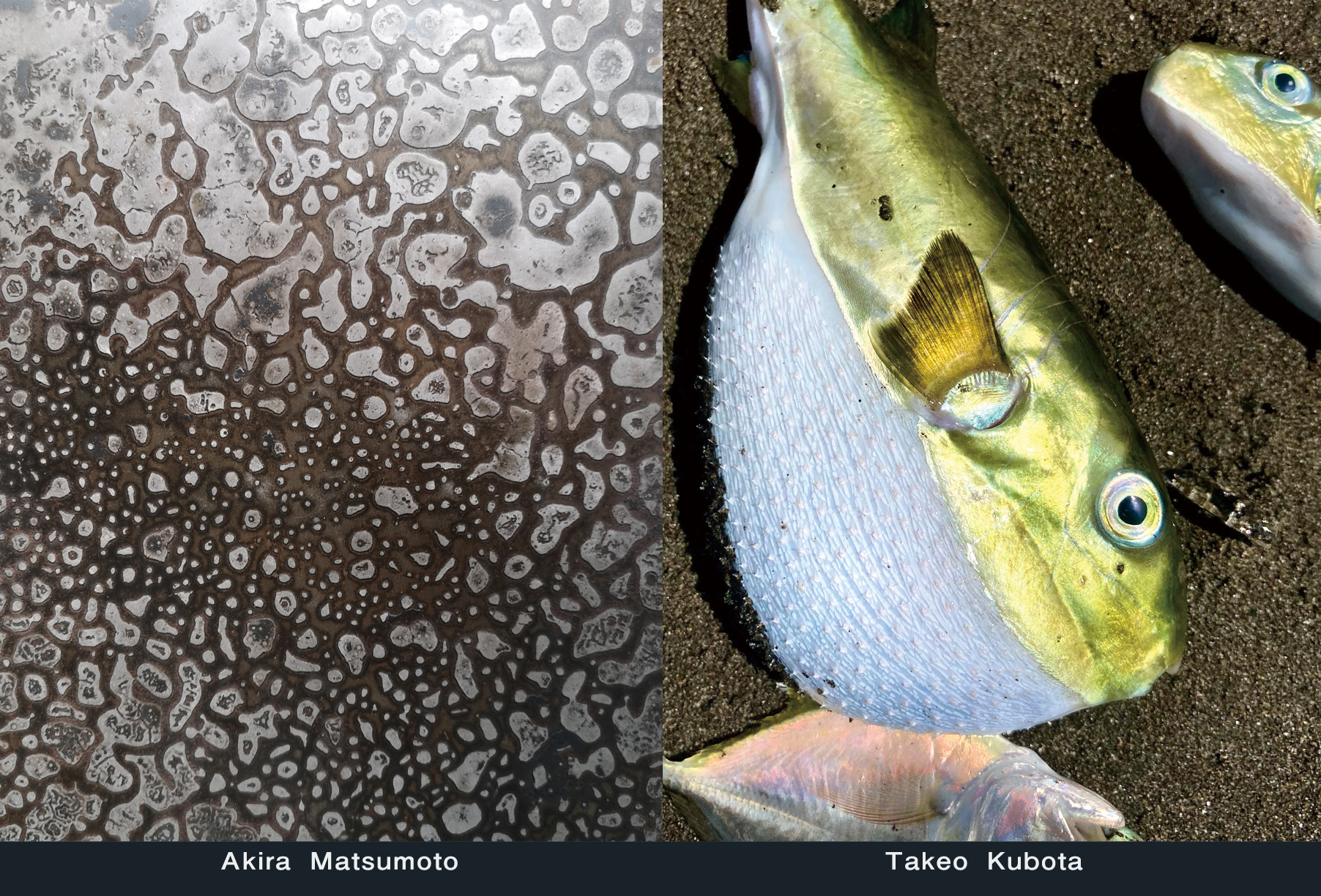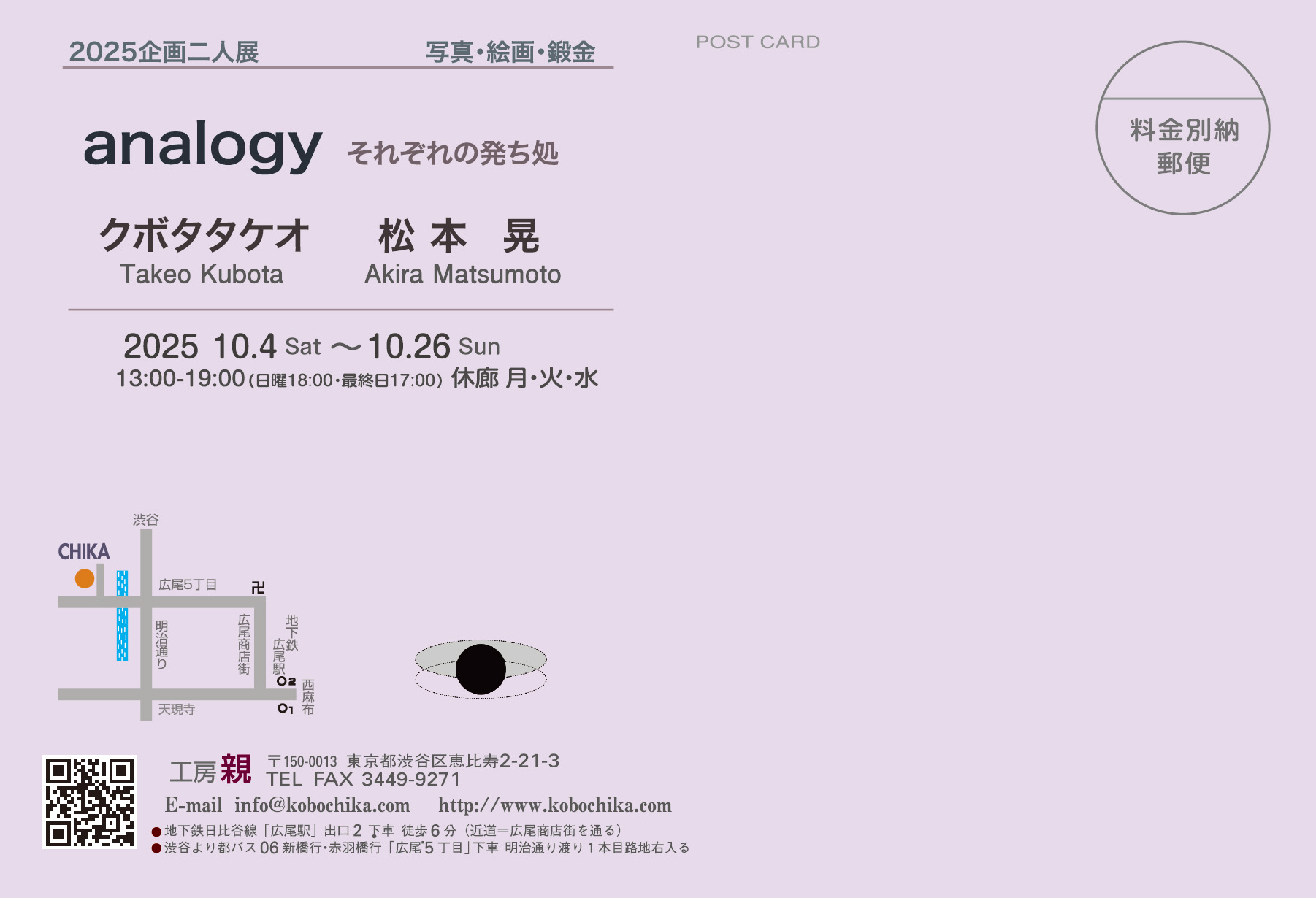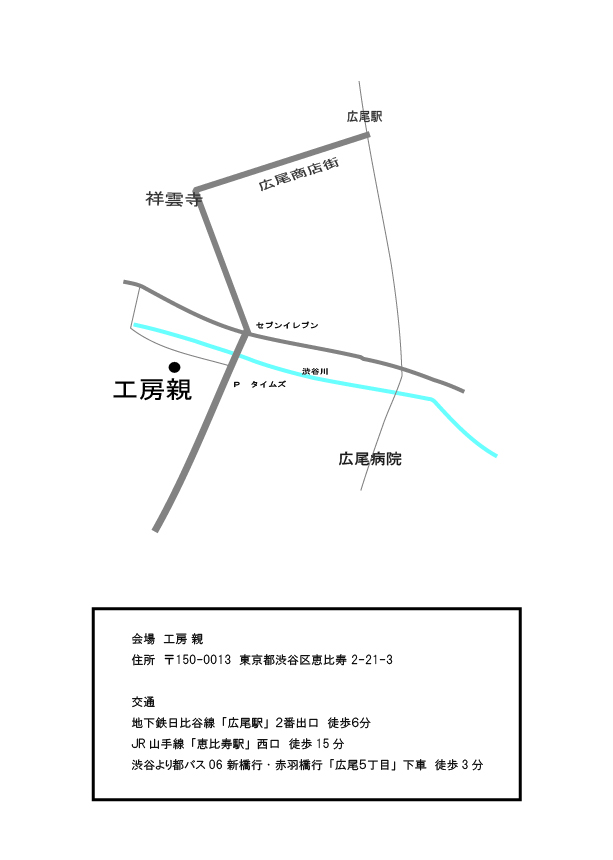「analogy」
10月4日(土)-10月26日(日)


2人展「analogy」
長らく興味のある作家と2人展を開催したいと思っていた。既に2019年に画家の日下芝氏との「Kontrapunkt」で
氏の絵画と自分の写真との平面同士のコラボは実現させた。
個別に展示するのではなく、組作品の形式をとり、さらに共同で1作品を創ることも数点試みた。
異なる世界を結びつけ、一つの空間を形成させるインスタレーションであった。
今回鍛金の松本晃氏に声をかけ快諾してもらった。氏の作品は工房親でその展示に関わりよく知っていたし、
見る度にその素材の力と造形の力の朴訥なバランスに感心させられて興味を持っていた。
立体であるからという訳ではないが、前回の様な同一性は求めず、逆に異質性に注視したい。
タイトル「analogy」意味は類推だが、それぞれの作者作品表面に現れた大きな相異を生み出す基にある自然との対時や
命との向き合いの共感性を模索することを意味している。
垣根は無いが、一応ジャンル違いのコラボはお互いを尊重し、双方の世界に踏み込まないことで生じるピュアな驚きと
新鮮な出合いを感じてもらえれば幸であります。
クボタタケオ
クボタタケオ Takeo Kubota
美術家 アートディレクター
長野県生まれ
京都市立藝術大学西洋画科構想設計卒業
展覧会概略
1995 個展 Mind Focus photo installation (工房親/恵比寿)
1996 個展 Nervous Focus photo installation (工房親/恵比寿)
1997 Correspondence/Landscape Ⅱ (工房親/恵比寿)
1998 NAGOYA CONTEMPORARY ART FAIR (名古屋)
2000 個展 The Sea in The Water photo installation (ヒルサイドウェスト代官山)
2003 個展 写真の在り処 photo installation (IBM Kawasaki City Gallery 川崎)
2016 ART×BIKE 自転車たおやかに (工房親/恵比寿)
2022 アニマニア (工房親/恵比寿)
2024 ART BOOK (工房親/恵比寿)
その他 個展・グループ展等多数
松本晃 Akira Matsumoto
鍛金作家
埼玉県川越市生まれ
東京藝術大学大学院美術研究科(段金)博士後期課程満期修了
展覧会概略
1996 個展 METAL WORKS 地殻景 (工房親/恵比寿)
1999 道具孝 くらしのなかのかなもの展 (ギャラリーインザブルー/宇都宮)
2001 現代日本の工芸・ジュエリー展 (コンテンポラリーアートNIKI/銀座)
2002 個展 METALWORKS turn (コンテンポラリーアートNIKI/銀座)
2003 現代日本の工芸家たち展 (コンテンポラリーアートNIKI/銀座)
2015 CONTRAST展 実感とイメージ (工房親/恵比寿)
その他 個展・グループ展等多数

